<< Previous | Displaying results 301-350 of 1298 for "nazi germany" | Next >>
Fritz Sauckel follows the proceedings of the International Military Tribunal trial of war criminals at Nuremberg. He was found guilty of war crimes and crimes against humanity and was sentenced to death. Photograph taken in Nuremberg, Germany, between November 20, 1945, and October 1, 1946.
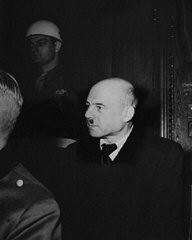
A US army officer (far right) poses with survivors of the Ohrdruf camp, a subcamp in the Buchenwald camp system. Photograph taken after the liberation of the camp. Ohrdruf, Germany, April 1945.

Carl Heinrich Langbehn was an attorney who was slated for a possible cabinet seat had the July 1944 attempt on Hitler's life succeeded. He is pictured here on trial before the People's Court in Berlin. Langbehn was executed in the Ploetzensee prison on October 12, 1944.
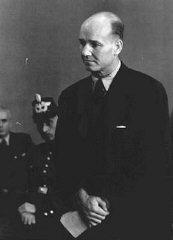
Execution site at the Ploetzensee prison. At Ploetzensee, the Nazis executed hundreds of Germans for opposition to Hitler, including many of the participants in the July 20, 1944, plot to kill Hitler. Berlin, Germany, postwar.
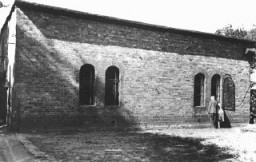
A large crowd gathers in front of the Rathaus to hear the exhortations of Julius Streicher during the Beer Hall Putsch, Hitler's early unsuccessful attempt to seize power. Munich, Germany, November 1923.
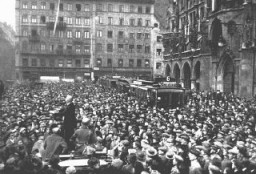
A group of young German boys view Der Stuermer, Die Woche, and other propaganda posters that are posted on a fence in Berlin, Germany, 1937.
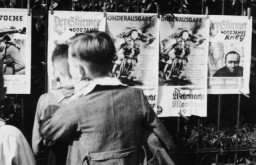
The Institute for Sexual Science was founded in Germany by Dr. Magnus Hirschfeld, a leading researcher of sex, sexuality, and gender. In 1933, the Nazis looted the institute and forced it to close. Photo published in 1924.
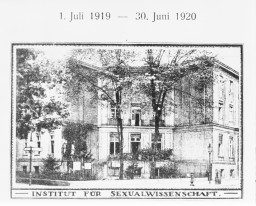
April 23, 1945. On this date, US forces liberated the Flossenbürg camp in Germany.

April 27, 1945. On this date, US soldier Aaron A. Eiferman wrote a letter to his wife describing conditions in Kaufering IV in Germany.
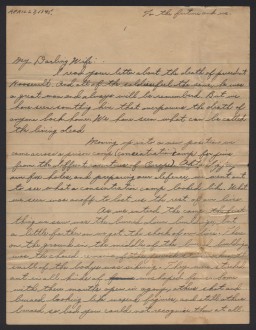
November 9, 1923. On this date, Adolf Hitler and the Nazi Party attempted to overthrow the Weimar Republic.

April 1, 1933. On this date, the Nazi Party and its affiliates organized a nationwide boycott of Jewish-owned businesses in Germany.
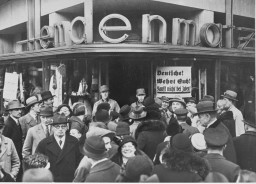
May 10, 1933. On this date, books deemed "un-German" are publicly burned throughout Germany.
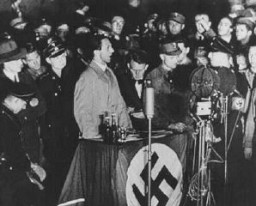
April 11, 1945. On this date, Buchenwald prisoners stormed the watchtower and seized control of the camp. US forces liberated the camp the same day.
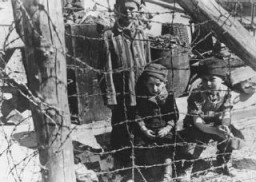
The Sicherheitsdienst (Security Service, SD) was a Nazi intelligence agency. Ideologically radical and part of the SS, it was a key perpetrator of the Holocaust.
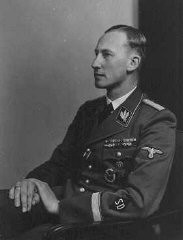
Explore a timeline of key events in the history of World War I and its aftermath. Learn about the conflict and its divisive peace.

Learn about the history of discrimination against Roma in Europe and how the Nazi regime committed genocide against European Roma during WWII.
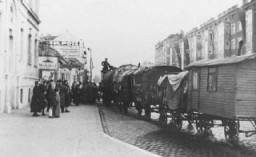
Listing of the 24 leading Nazi officials indicted at the International Military Tribunal at Nuremberg. Learn about the defendants and the charges against them.
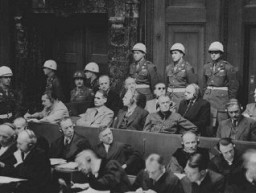
Key dates in the history of the SS (Schutzstaffel; Protection Squadrons), charged with the leadership of the “Final Solution,” the murder of European Jews.
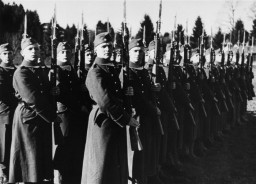
The Lebensborn program, created by the SS in late 1935, was intended to promote population growth among those whom Nazi authorities deemed “racially valuable.”
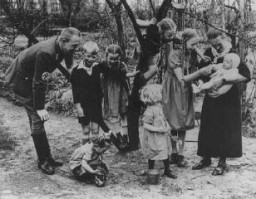
The “Third Reich” is another name for Nazi Germany between 1933-1945. Learn more about life under Nazi rule before and during World War II.
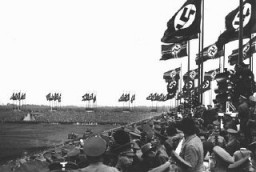
Book burning is the ritual destruction by fire of books or other written materials. The Nazi burning of books in May 1933 is perhaps the most famous in history. Learn more.
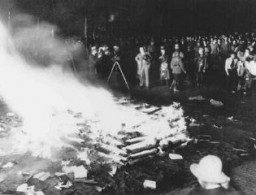
After WWII, prosecutors faced the challenge of assessing the guilt of propagandists whose words, images, and writings had supported Nazi brutality and mass murder.
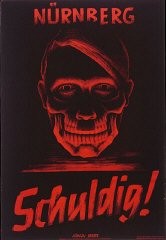
During World War II, SS and police leaders played a key role in the mass murder of Europe’s Jews. Learn how Himmler combined the SS and police to create a radical weapon for the Nazi regime.
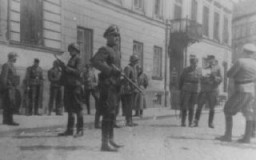
One of three children, Leo grew up in the small town of Hochneukirch, 20 miles northwest of Cologne. As an adult, Leo entered his father's cigar manufacturing business, "Isak Falkenstein and Sons." Leo and his wife, Bertha, lived in a house next to Leo's parents. Leo and Bertha had six children whom they raised in the Jewish faith. 1933-39: Leo and Bertha's daughter Johanna has brought her two girls to live with them for a while here in Hochneukirch. Johanna's husband, Carl, has been having trouble…
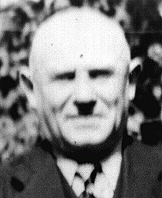
As Allied forces approached Nazi camps in the last months of WWII, the SS organized brutal “death marches” (forced evacuations) of concentration camp inmates.
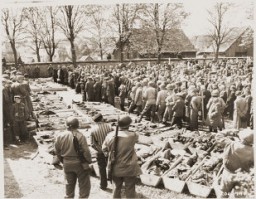
Jews were the main target of Nazi hatred. Other individuals and groups considered "undesirable" and "enemies of the state" were also persecuted.
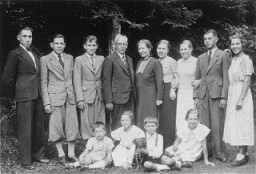
A couple dances at the Eldorado, a nightclub frequented by members of Berlin's gay and lesbian community. The nightclub, along with other similar establishments, was closed by the Nazi government in the spring of 1933. Photograph taken in Berlin, Germany, 1929. Learn more about the Eldorado.
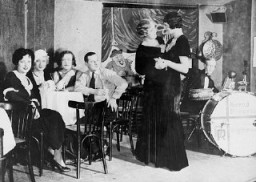
Learn about the origins and legacy of Pastor Martin Niemöller's famous postwar words, “First they came for the socialists, and I did not speak out…”
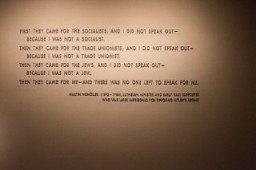
Oskar Schindler's actions to protect Jews during the Holocaust saved over 1,000 Jews from deportation. Learn more about Schindler's List.
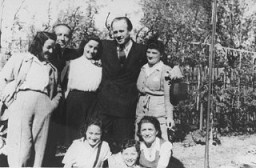
The "Final Solution," the Nazi plan to kill the Jews of Europe, was a core goal of Adolf Hitler and the culmination of German policy under Nazi rule.
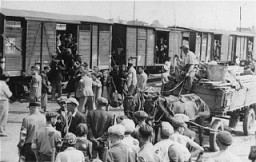
Hundreds of laws, decrees, guidelines, and regulations increasingly restricted the civil and human rights of Jews in Germany from 1933-39. Learn more.
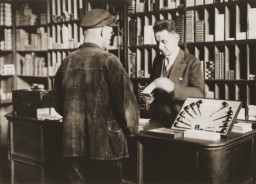
Despite Hitler’s popularity, there was also opposition. Learn more about German resistance, which ranged from non-compliance to assassination attempts.
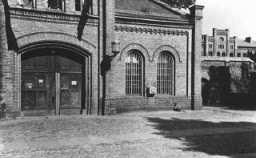
To implement their policies, the Nazis had help from individuals across Europe, including professionals in many fields. Learn about the role of the military.
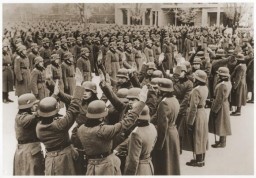
The "Nacht und Nebel" decree allowed German authorities to capture without trace ("by night and fog") and try individuals alleged to be "endangering German security."
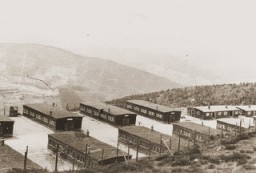
The Decree against Public Enemies was a key step in the process by which the Nazi leadership moved Germany from a democracy to a dictatorship.

Learn about conditions and the treatment of prisoners in Ravensbrück, the largest concentration camp for women in the German Reich.
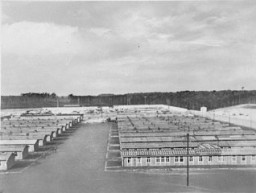
Explore a biography of Alfred Rosenberg, influential Nazi intellectual who held a number of important German state and Nazi Party posts.
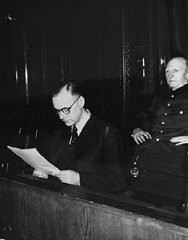
The Nazis and their coalition partners used the burning of the Reichstag on February 27, 1933, as the pretext for emergency legislation that ultimately paved the way for Nazi dictatorship.
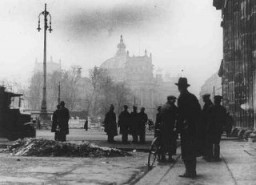
The Danish resistance movement, assisted by many ordinary citizens, coordinated the flight of some 7,200 Jews to safety in nearby neutral Sweden. Learn more about rescue in Denmark.
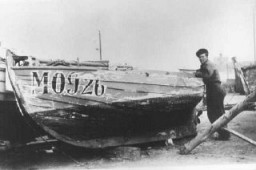
The Oath of Loyalty for All State Officials started to change in 1934. Learn more about the oath and Germany’s journey from democracy to a Nazi dictatorship.
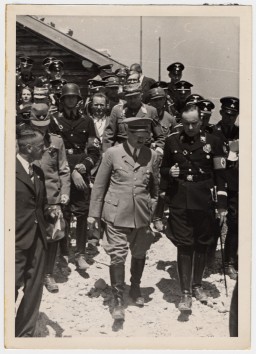
As Germany conquered much of Europe, the concentration camp system expanded in size, function, and number of prisoners. Learn about concentration camps from 1939–1942.
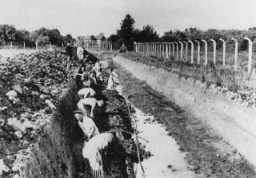
Leni Riefenstahl was a German dancer, actress, and film director best known for her imposing propaganda films in support of the National Socialist (Nazi) Party.
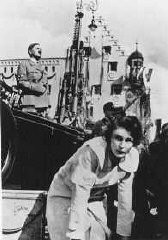
Nazi ideology aimed to promote the myth of an ideal national community and label those who were to be excluded from it as enemies. Propaganda was essential in promoting such myths.
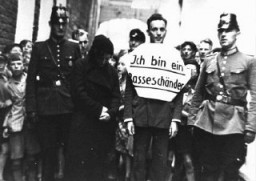
Learn about the Nazi concentration camp system between 1942 and 1945. Read about forced labor, evacuations, medical experiments, and liberation during this period.
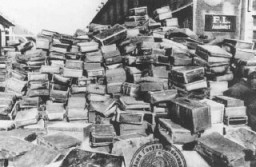
November 22, 1930. On this date, Nazis attack a leftwing group at a dance hall in Berlin.
Adolf Hitler greets Reich Bishop Ludwig Mueller at a Nazi Party Congress. Roman Catholic Abbot Alban Schachleiter stands between Hitler and Mueller. Nuremberg, Germany, September 1934.
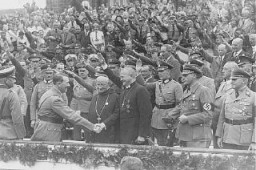
The Reichstag Fire Decree of February 1933 restricted individual freedoms, and allowed Hitler's government to overrule state and local laws and overthrow state and local governments.
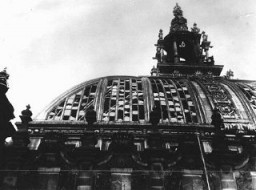
At the Wannsee conference of January 1942, Nazi Party and German government officials gathered to coordinate implementation of the “Final Solution to the Jewish Question.”
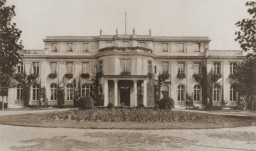
Karl Höcker’s album shows him in close contact to the main perpetrators at Auschwitz-Birkenau. Learn about his 1963 trial and the significance of his album.
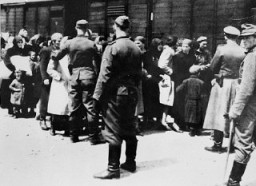
February 23, 1930. On this date, Nazi stormtrooper Horst Wessel dies after being shot and becomes a martyr in Nazi propaganda.
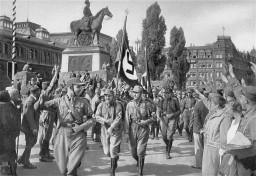
We would like to thank Crown Family Philanthropies, Abe and Ida Cooper Foundation, the Claims Conference, EVZ, and BMF for supporting the ongoing work to create content and resources for the Holocaust Encyclopedia. View the list of donor acknowledgement.